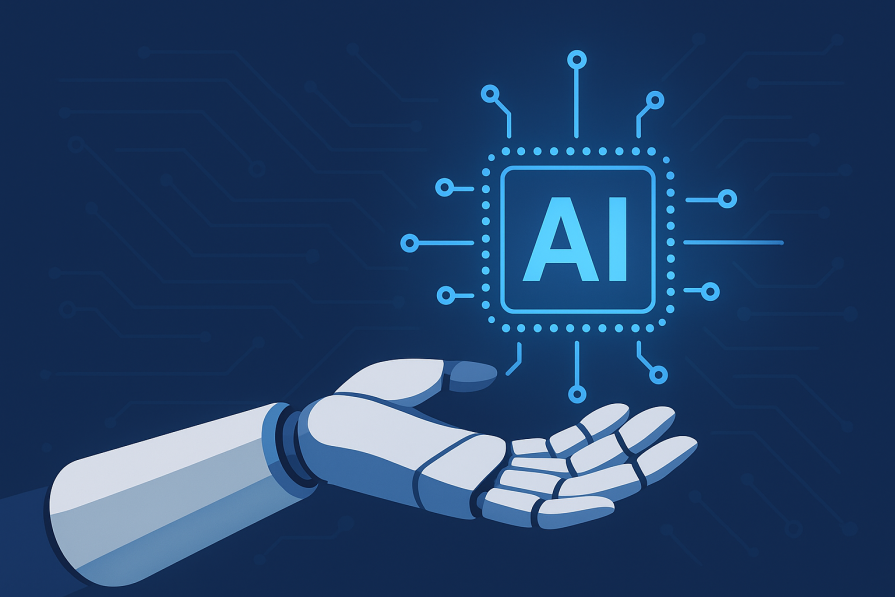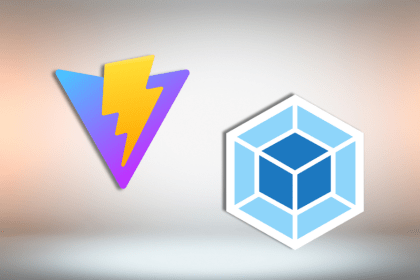
Imagine a digital assistant that doesn’t just answer questions or draft emails, but one that can actually do things. It could book your flights, organize your files, update your project management board, and even deploy your latest code, all through a single command.

This is the dream many developers and AI enthusiasts have long associated with Iron Man’s Jarvis: a system that listens, understands, and executes seamlessly.
But most AI tools are still confined within walled gardens. They can summarize and suggest, yet their reach ends where their platform’s ecosystem does. Whether it’s Google, OpenAI, or Microsoft, the intelligence is there, but the freedom isn’t. This limitation keeps them powerful yet paralyzed.
Enter the Model Context Protocol (MCP) — a new open framework that could change this balance entirely. As Kent C. Dodds describes in his PodRocket conversation, MCP offers a standardized way for any developer to connect their service to any AI agent. It’s the missing bridge between large language models and the decentralized web of APIs and applications we already depend on.
In this piece, we’ll explore how MCP could give AI its metaphorical “hands,” enabling not just smarter conversations but meaningful actions across the open web. We’ll unpack how this shift will reshape engineering practices, developer experience, and the architecture of modern applications.:

The Replay is a weekly newsletter for dev and engineering leaders.
Delivered once a week, it's your curated guide to the most important conversations around frontend dev, emerging AI tools, and the state of modern software.
At its core, the Model Context Protocol is an open standard that defines how AI agents can communicate with tools, services, and applications in a consistent, interoperable way.
Instead of each assistant being locked into a proprietary ecosystem like Google Assistant within Google services or OpenAI’s ChatGPT inside its own integrations, MCP creates a universal language for interaction. It bridges intelligent systems to the diverse world of APIs and applications that already exist on the web.
The primary goal of MCP is interoperability. It ensures that a single agent can securely connect to multiple services — from calendars and emails to project management tools, cloud storage, and custom-built APIs — without each developer having to reinvent the integration wheel. The protocol handles authentication, capability discovery, and communication flow, allowing developers to focus on functionality rather than plumbing.
This stands in sharp contrast to today’s landscape, where AI ecosystems remain siloed. OpenAI’s plugin environment, Google’s Workspace integrations, and Amazon’s Alexa skills all operate like closed cities, powerful yet isolated. MCP, on the other hand, envisions an open web of cooperation where any developer can expose their service in a way any AI agent can understand and use.
Kent C. Dodds captures this vision beautifully: a future where every app exposes an MCP-compatible interface, allowing AI agents to act as true intermediaries between users and services.
In essence, MCP transforms the web into an actionable ecosystem, turning every service into something an AI can work with, not just talk about. It’s not just giving AI a voice; it’s giving it hands.
The rise of MCP introduces a profound shift in how we think about software architecture. For years, web development has centered on frontend-first design, building interfaces for humans to click, type, and navigate. As MCP gains traction, we’re moving toward an agent-first paradigm, where the primary user of software isn’t a human sitting at a screen, but an AI agent acting on their behalf.
Developers will begin building not just for human interfaces but for machine-readable, agent-friendly endpoints. Instead of focusing exclusively on layout frameworks and visual components, teams will architect systems around capability exposure, defining what actions an AI can perform, what data it can request, and how securely it can do so.
APIs will evolve beyond simple request-response models. MCP introduces contextual, task-oriented communication. Rather than merely sending data, an MCP-compliant service provides semantic context about what it can do, what data it needs, and under what permissions. APIs become self-describing and interoperable, discoverable by any compliant agent.
This new model leads to MCP servers acting as action hubs instead of static websites. Rather than hosting pages for human browsing, these servers expose capabilities that agents can query, orchestrate, and chain into complex workflows. In this architecture, the “frontend” becomes the agent interface, whether that’s a voice command, a prompt, or a contextual dialogue with the user.
For developers, this shift demands new thinking. Building for MCP means designing products as services within a broader ecosystem. It raises key questions:
Developers will use new SDKs for agent orchestration, design schemas defining actions and intents, and test through simulated agent conversations rather than GUIs. The “frontend” of tomorrow is far more interactive than a visual interface; it’s a protocol that machines can understand fluently.
One of the biggest problems in today’s AI landscape is ecosystem fragmentation. Google’s Gemini thrives inside Workspace; OpenAI’s ChatGPT lives within plugins; Alexa excels in Amazon’s ecosystem. Each is powerful and isolated. This fragmentation stifles collaboration and locks independent developers out.
MCP changes this dynamic entirely. By defining a universal protocol for capability sharing, it allows AI agents to interact with any service implementing MCP — no proprietary contracts or gated APIs required. It’s a decentralized model where functionality is distributed across the web, letting AI act as a bridge between independent tools and large systems alike.
In practical terms, MCP brings interoperability to AI just as HTTP did for the web. Developers can describe a service’s capabilities in a standardized format, and any compliant AI agent can discover and act upon them. This levels the playing field. A solo developer’s app can be as discoverable to an AI agent as one built by a Fortune 500 company.
For open source projects, this is transformative. Tools like Nextcloud, Mastodon, or open CRMs could expose their capabilities as elegantly as commercial products, enabling a truly democratic AI ecosystem built on shared standards rather than corporate exclusivity.
In short, MCP tears down the walls between ecosystems and replaces them with bridges — making AI more capable, more democratic, and more aligned with the web’s founding principle: openness.
For developers, the MCP era redefines software creation. Instead of building buttons and dashboards for human interaction, they’ll define capability schemas, like the actions an agent can take, how they’re triggered, and what information they require.
Testing becomes conversational, not visual. The goal isn’t human intuitiveness, but machine interpretability and reliability.
From a business standpoint, MCP opens entirely new markets. We’ll likely see AI capability marketplaces where companies publish MCP-compatible actions — from booking and payments to analytics and automation — accessible by any AI assistant. Pricing could shift toward per-action or usage-based models, similar to today’s API billing.
But this also introduces operational challenges: agent authentication, scoped access, and delegated permissions. Businesses will need to balance flexibility with security as agents execute tasks autonomously.
Ultimately, MCP creates an economy of capabilities where the best tools win not by having slick interfaces, but by being the most interoperable, reliable, and agent-ready.
While MCP’s vision is powerful, it also introduces new challenges around security, privacy, and standardization. In an open-agent world, systems must manage trust between autonomous actors with access to sensitive data.
Traditional auth models may not suffice when agents act on behalf of users in real time. Developers will need to rethink identity and implement scoped, auditable permissions for agents themselves. Similarly, governance is key. If competing standards emerge, MCP’s unifying goal could fragment.
Transparency, oversight, and user control will be essential. Systems must let users approve, review, and limit agent actions, maintaining trust without hindering autonomy. Design will evolve from user-centered to trust-centered.

We’re standing at the edge of one of the most transformative shifts in computing since the dawn of the web. The next era of AI won’t be defined by chatbots that talk; it’ll be defined by agents that act. It’s a big jump that MCP is laying the foundation for, enabling agents that can perform tasks seamlessly across the open web.
In this vision, assistants become collaborators capable of scheduling, analyzing, posting, deploying, and managing workflows without human micromanagement. For the open web, it’s a renaissance: independent developers regain influence through open standards rather than platform permissions.
With MCP, the web becomes programmable for AI. Every service, no matter how small, can contribute to a global ecosystem of intelligent collaboration. It restores the web’s balance, returning innovation to the builders, not the platforms.
Developers who experiment with MCP today will define the agent-powered web of tomorrow. The standards are forming, the tools are emerging, and the question is no longer if AI will act, but how open that future will be.
The shift from talking AI to acting AI is redefining software itself. With MCP, we move beyond closed ecosystems toward an open web where agents can securely and intelligently perform tasks across services.
For developers, this means designing systems for agents, not just users. For businesses, it means new interoperability and monetization models. And for open-source communities, it means equality of access through shared standards.
The challenges are real (security, privacy, and standardization, just to name a few), but so is the opportunity. MCP gives AI not just hands, but the web itself a new heartbeat. The next generation of developers won’t just build apps; they’ll build the connective tissue of a truly intelligent web.

children correctly in TypeScriptLearn modern best practices for typing React children in TypeScript, including ReactNode, PropsWithChildren, ComponentProps, and why React.FC is no longer recommended.

Learn how to internationalize Next.js apps with Lingui and next-intl, covering App Router, RSC, routing, locale detection, and dynamic language switching.

Vite vs Webpack in 2025: a senior engineer’s take on performance, developer experience, build control, and when each tool makes sense for React apps.

Learn how Vitest 4 makes migrating from Jest painless, with codemods, faster tests, native ESM, browser testing, and a better DX.
Would you be interested in joining LogRocket's developer community?
Join LogRocket’s Content Advisory Board. You’ll help inform the type of content we create and get access to exclusive meetups, social accreditation, and swag.
Sign up now